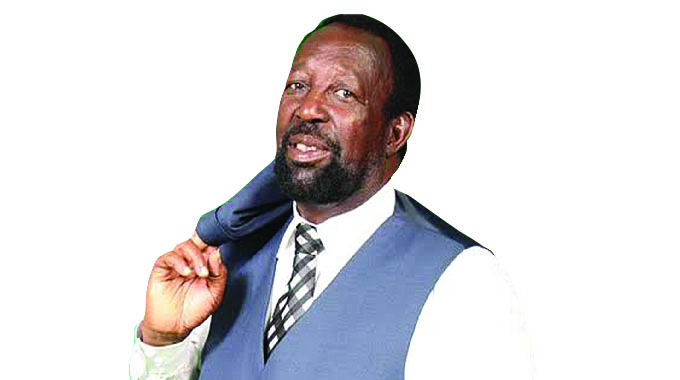EDITORIAL COMMENT: Farmers need to see trees as energy crop

Theoretically, firewood and burning wood to cure tobacco can have zero carbon footprints and can be counted on the list of the sustainable and renewable energy resources the world needs to move rapidly towards if we are to limit the devastation caused by global warming.
But the theory only works if we plant the trees first. As the trees designated as wood fuel grow they pull carbon dioxide out of the atmosphere and covert it to wood. When the tree is cut down and the wood is burned it returns the carbon to the atmosphere, where it is captured by the new trees that have already been planted and are growing.
There is nothing inherently wrong in farmers using wood to fuel tobacco barns. In fact this is, again in theory, far better than using the coal that the large commercial estates had largely switched to before land reform, since coal is a fossil fuel, returning to the 21st century atmosphere carbon that was locked away in peat bogs around what is now Hwange between 350 million and 150 million years ago.
In the climate debates and the action plans being pushed forward there is a very strong thread that we need to keep as much of the fossil carbon as possible, the coal and oil, locked away and while developing countries have carefully said they need to use some to catch up with the developed world in finite time, they also agree that they should increase the share of renewable sources in their energy mix to minimise the damage.
The theory that wood is a renewable energy source breaks down when farmers and others chop down trees they have never planted and do not even bother replacing those trees, many of which are slower growing indigenous forest that will decades to replace and, in any case, are needed to preserve the natural ecology of the country.
Vast numbers of many other species, from fungi and tiny insects to birds and mammals have evolved within the indigenous woodlands and chopping them down simply creates lifeless deserts.
There are faster growing trees, and some of these have the useful property of coppicing, that is when the main trunk is cut away a whole lot of new trunks grow from the stump, very quickly as the root system is in place, and can be harvested within a surprising short time. What this means is that a tobacco farm where wood is used for curing needs to be a tree farm as well.
That is some of the land is set aside to grow the trees that will be used for the curing. And the farmers need to take as good care of this crop of trees as they take for the tobacco fields and the tobacco plants, since the tobacco fields are a very short-term investment without the wood.
It should be very easy to identify a tobacco farm, the cropping fields set amid timber plantations and all roads and paths lined with trees. But that is not, regrettably, what we see at the moment.
Everyone, from the Tobacco Industry Marketing Board, the Ministry of Lands, Agriculture, Fisheries, Water and Rural Development, the Forestry Commission and the Ministry of Environment, Climate, Tourism and Hospitality Industry and its Environmental Management Agency downwards has been stressing the need for farmers using wood to plant the trees that supply the wood.
Now First Lady Amai Auxillia Mnangagwa is taking the practical steps of showing just what this means, and we are not talking about a couple of gum trees in forgotten corner of a farm. This week she was at a homestead in Mashonaland West where she joined in the planting of 2 500 croton and gum trees on a single modest farm. That sounds about right and shows the scale of the planting needed.
While tobacco farmers need to plant, between them, perhaps 50 million trees to use timber as a renewable energy source, this comes to around a few hundred to a few thousand for each farm, depending on size. You need a bit extra because conversion of wood to energy is not 100 percent efficient, but in any case farmers need timber for fencing and other uses and a fence post, or a roof beam, does lock up carbon for a century or so.
And as farmers make more money, many want to build decent houses and if they have a clay deposit are keen on making their own bricks, and that needs extra renewable timber, not a decent indigenous tree a century old, to burn the bricks. So it is almost impossible to have too many trees.
Our farmers have shown they can embrace scientific advice, hence the new high yields and larger harvests. Since the early 1980s most communal homesteads have planted small tree lots for domestic consumption, and perhaps the huge investment in girls education has helped provide the pressure from a generation of educated women who feel that spending days collecting firewood is no longer a viable option.
In practical terms timber fields require labour at the beginning, to dig the holes and look after the trees for the first couple of years.
But this labour can be minimised if the trees are planted in the rainy season but only once the rains really get going, another practical point indirectly made by the First Lady this week when she was planting after a fortnight of daily rain.
In any case it seems obvious that this will save labour in future years, when it is far easier to haul firewood from a plantation outside the barn rather than the forest several kilometres away, if there is still a forest there.
Amai Mnangagwa gave other practical points, planting fruit trees. These not only increase the forestation we need, but provide food and an extra income.
Farmers need to put together plans that provide a number of streams of income if they are to move into the middle-income groups, and Zimbabwe’s growing towns and cities have an almost inexhaustible demand for good fresh food.
We also need to remember that trees are nutrient pumps, bringing minerals and nutrients from deep underground to the surface when the leaves fall. Modern conservation farming requires a lot of organic material and mulches, and a farmer with a field of trees and a strong broom can quickly assemble the piles of rotting leaves that make the best mulches, in quantity. So that farmer not only has timber and wood for curing tobacco, but also a high yielding maize field even in drought year.
All this requires is to treat trees as an extra crop on the farm, the energy, fruit and fertiliser crop, rather than as a fast diminishing common resource that no one looks after. The investment in labour will pay huge dividends.










Comments